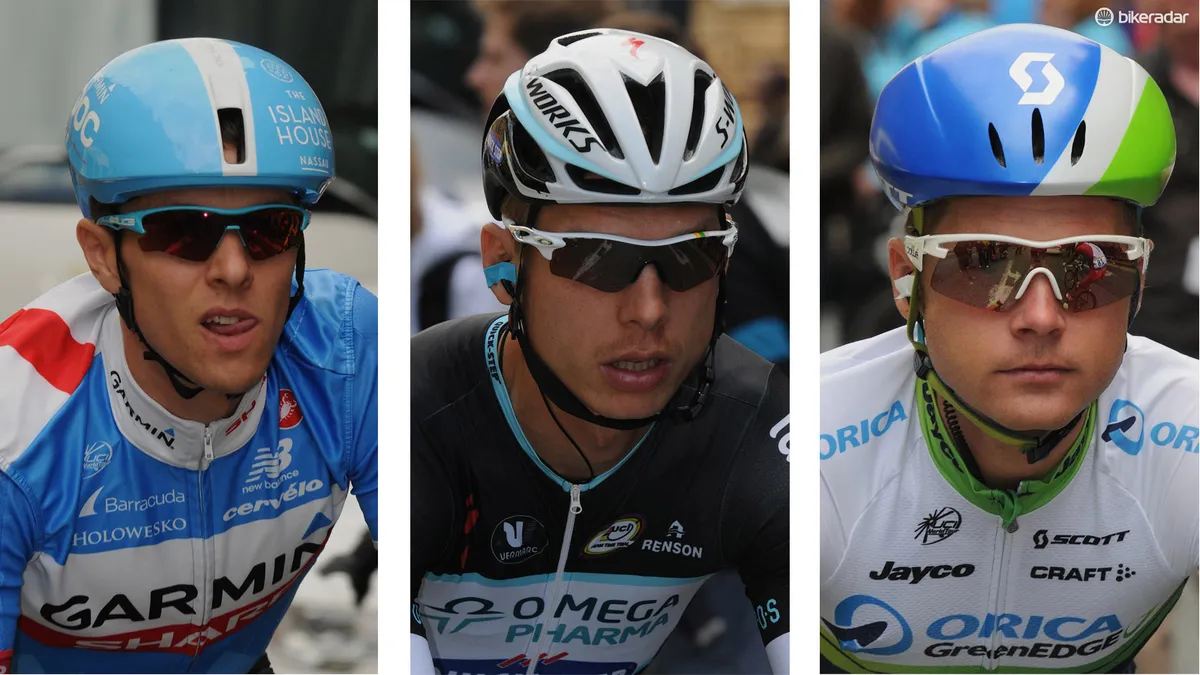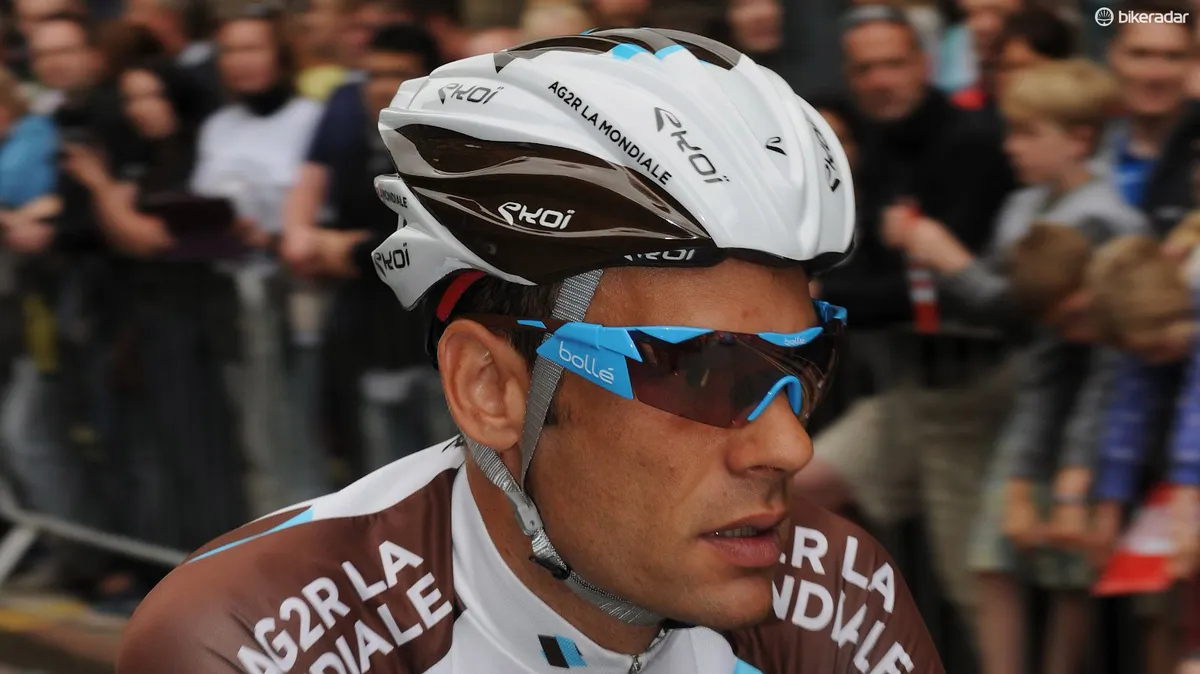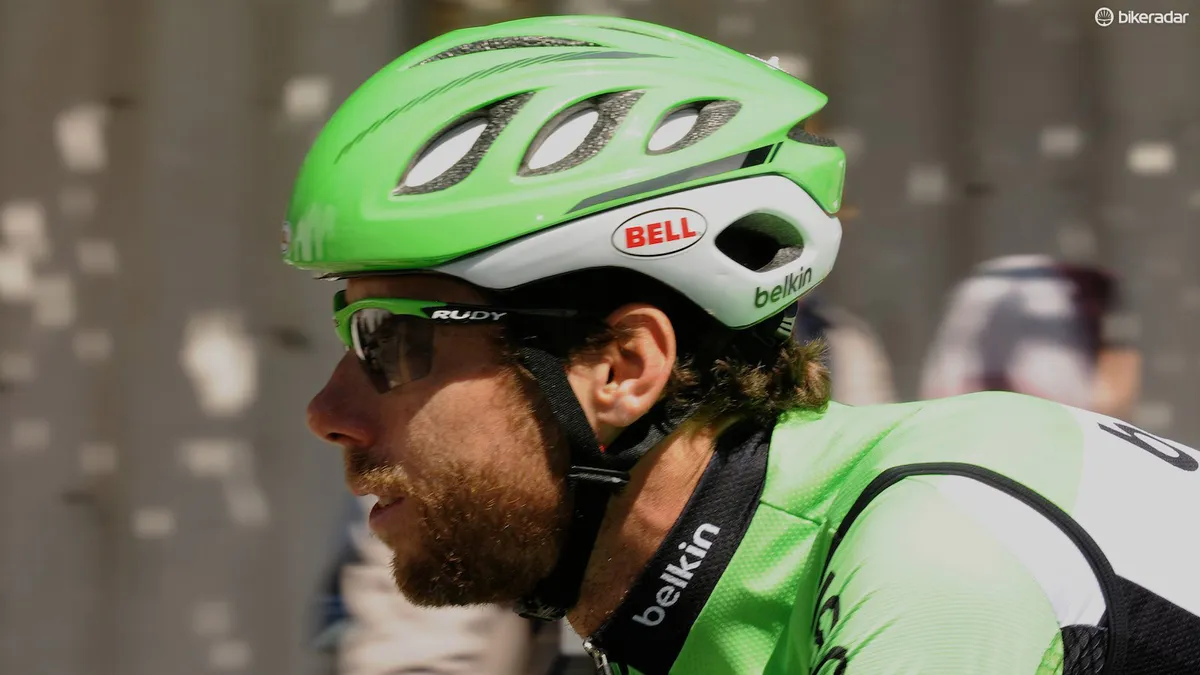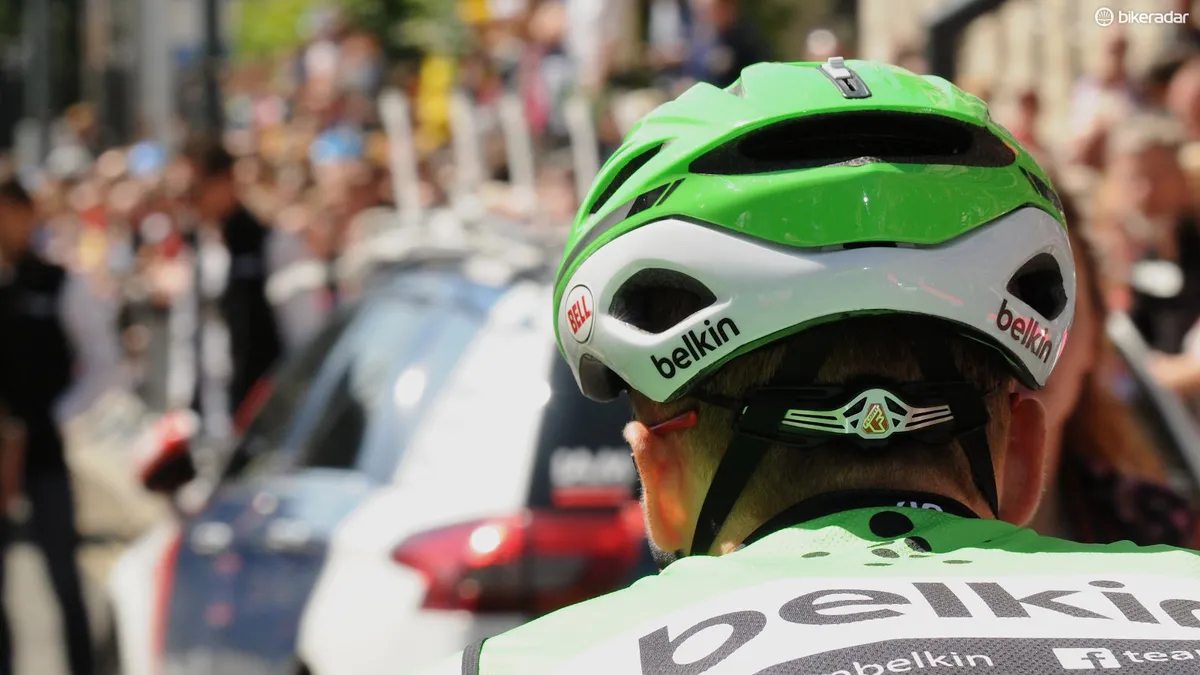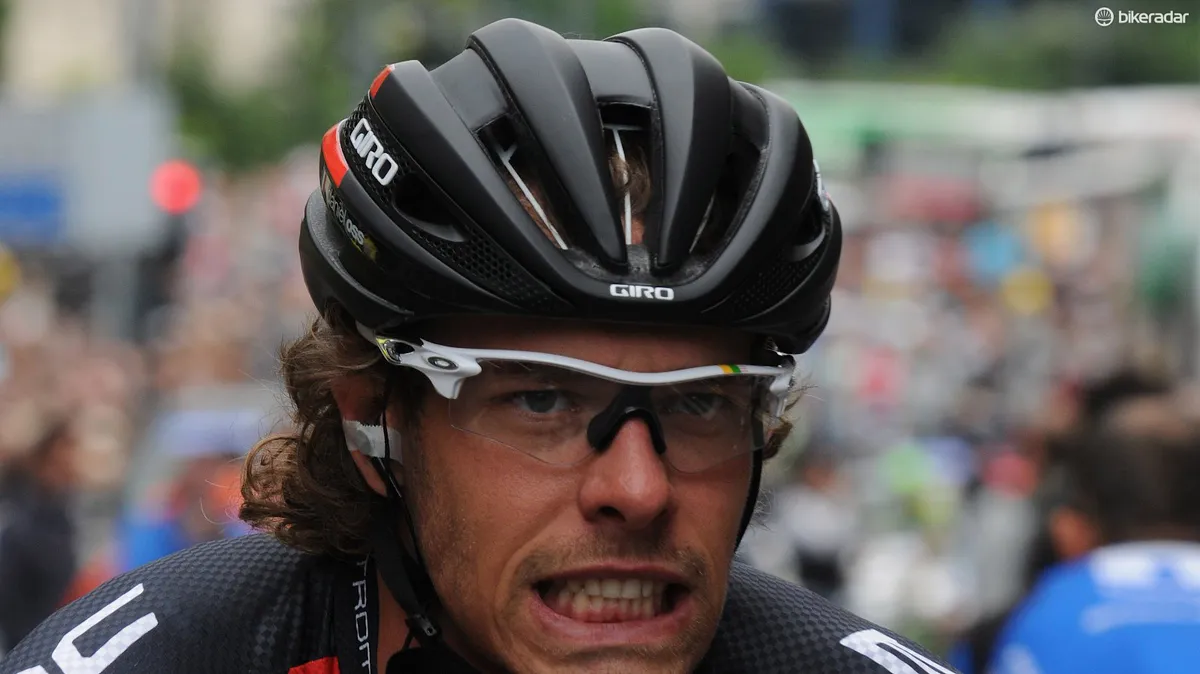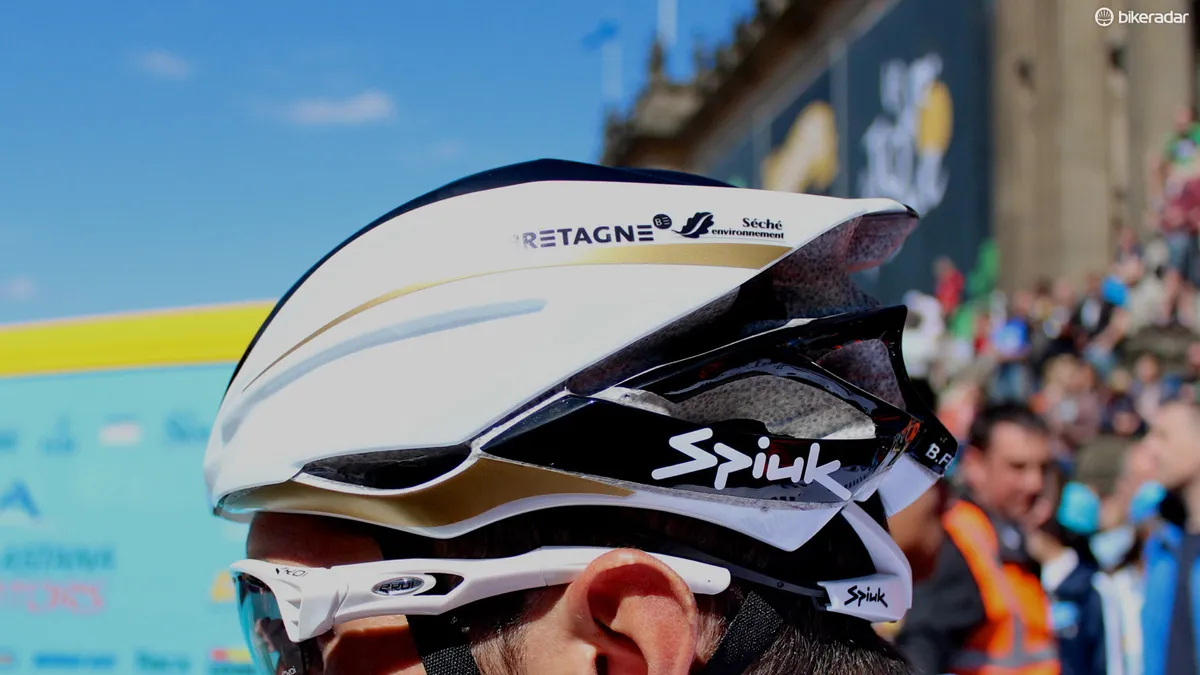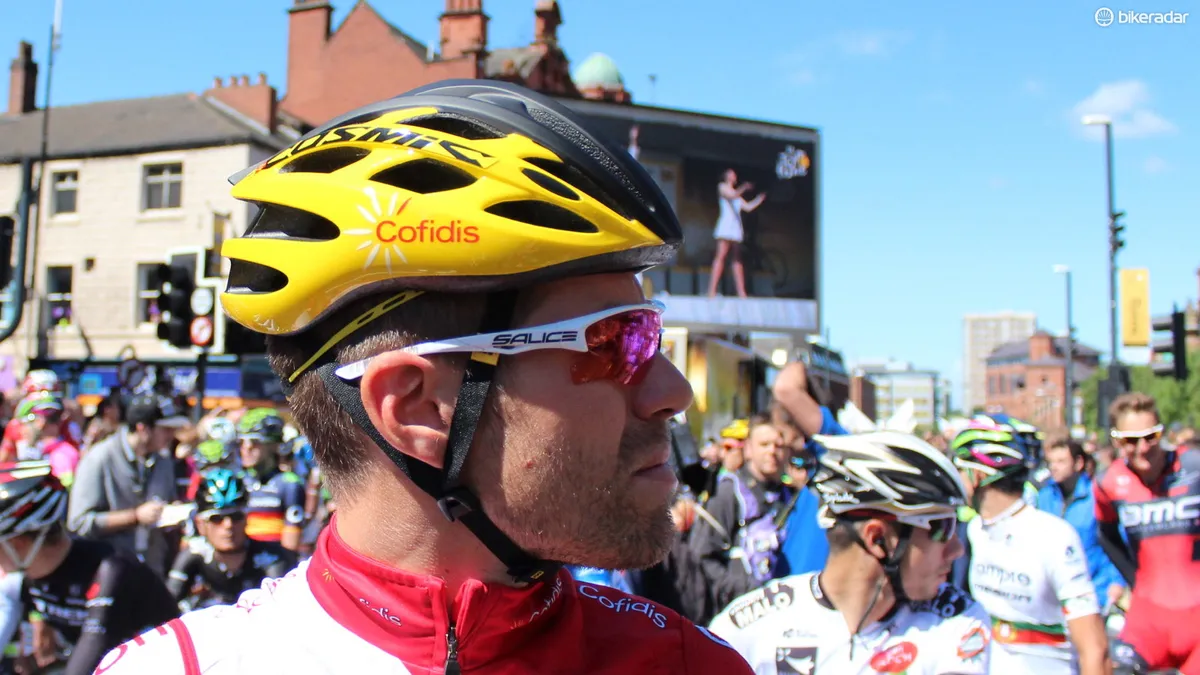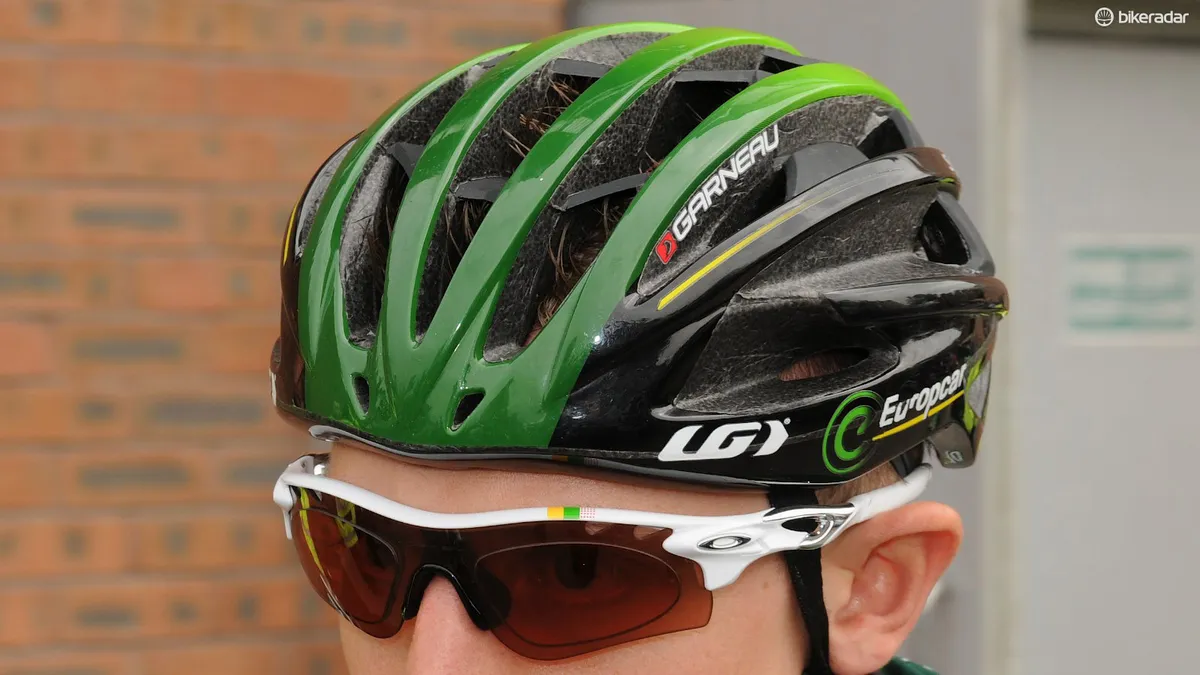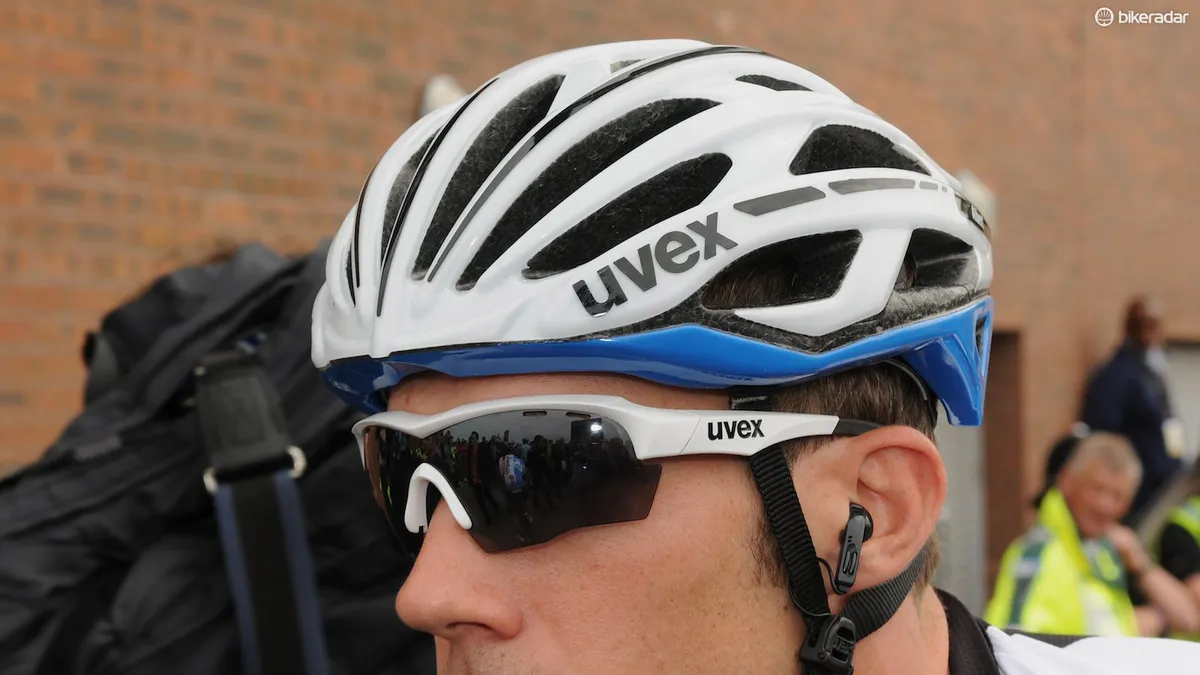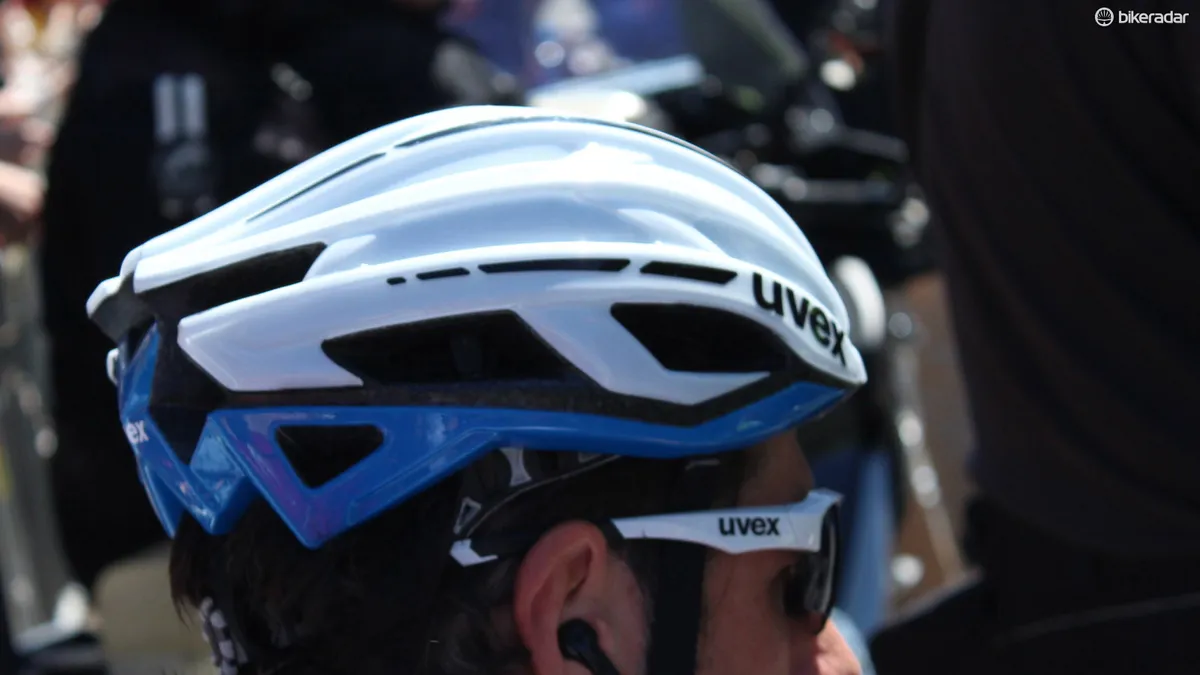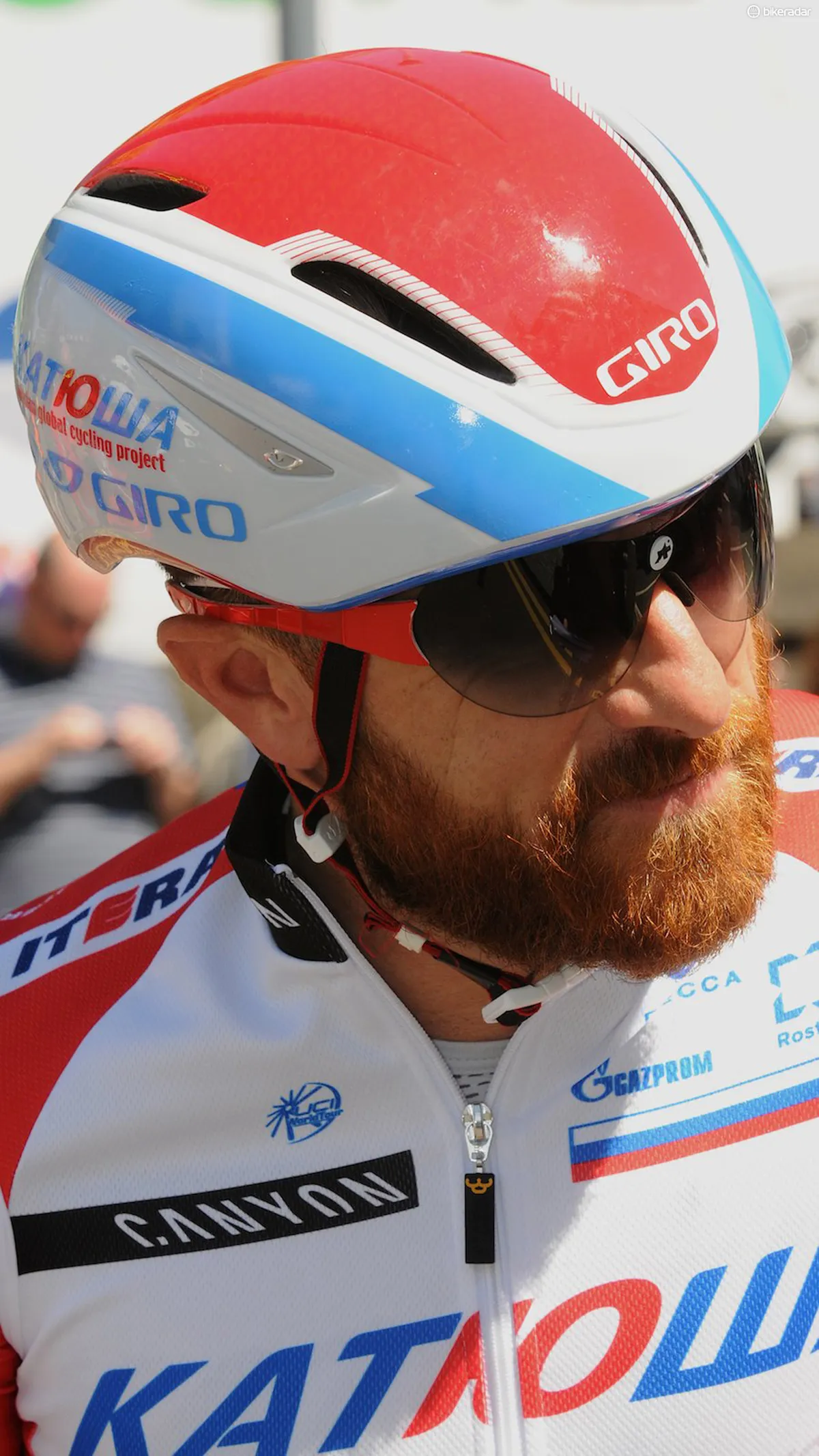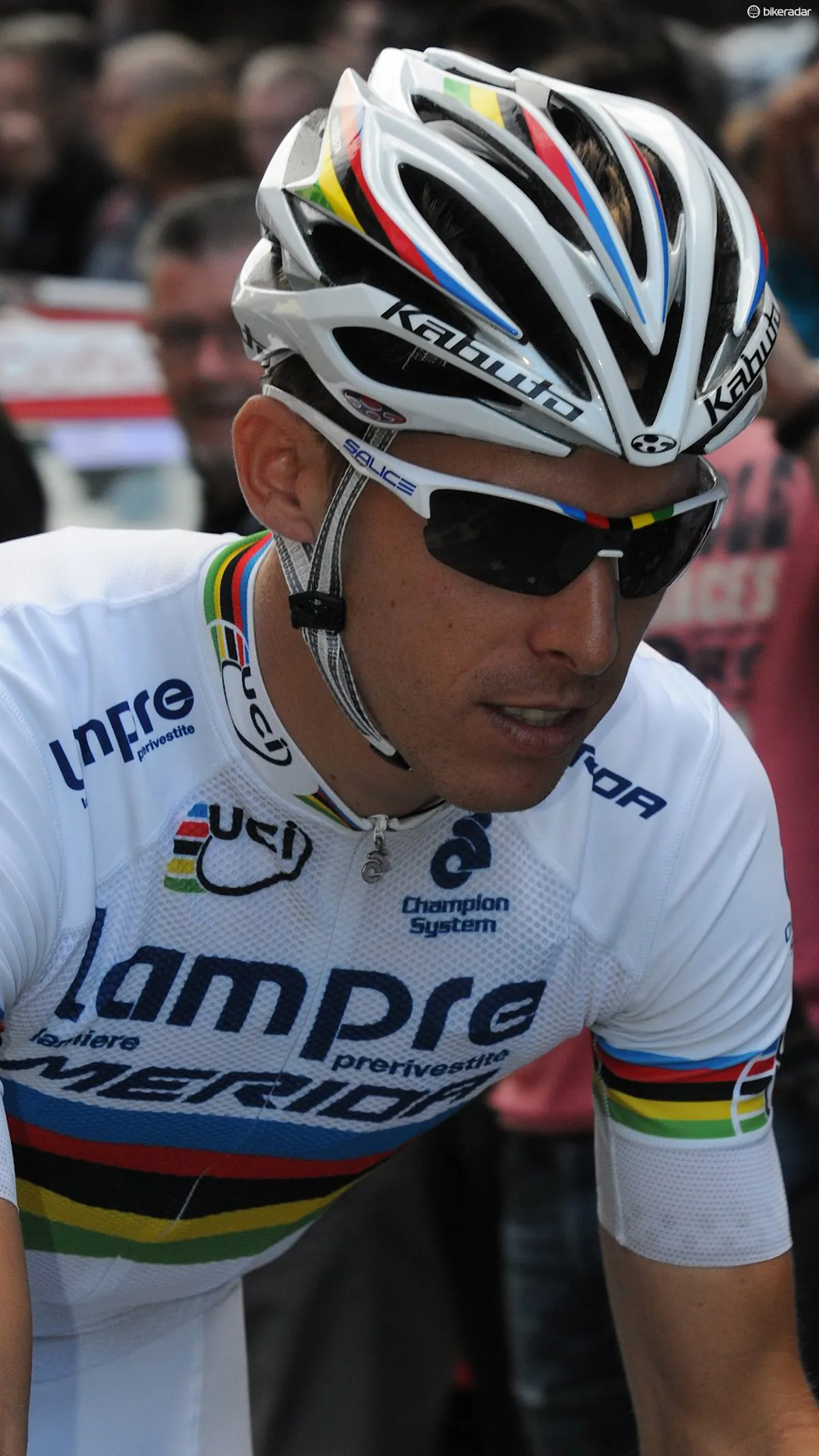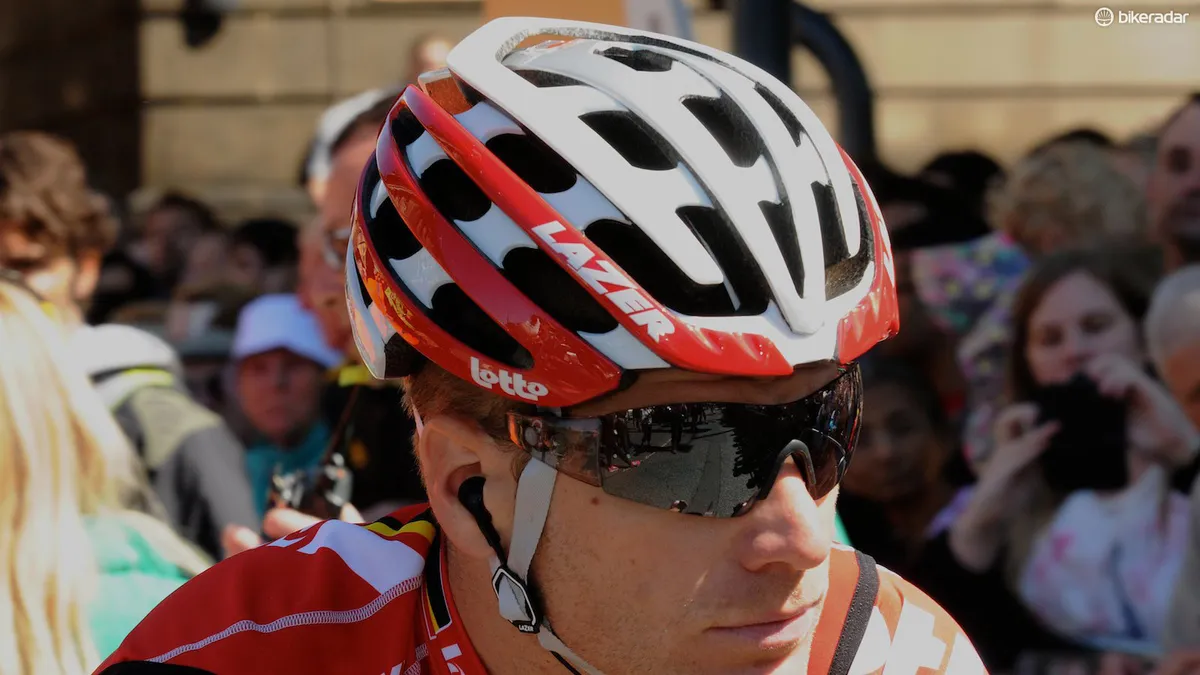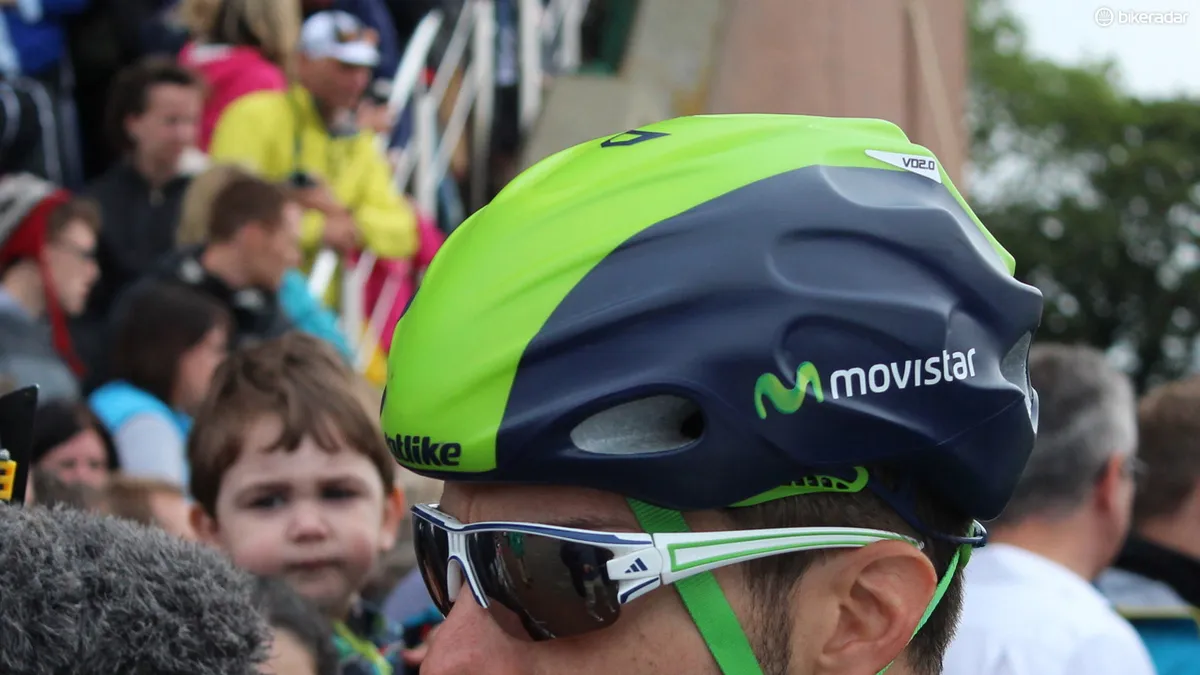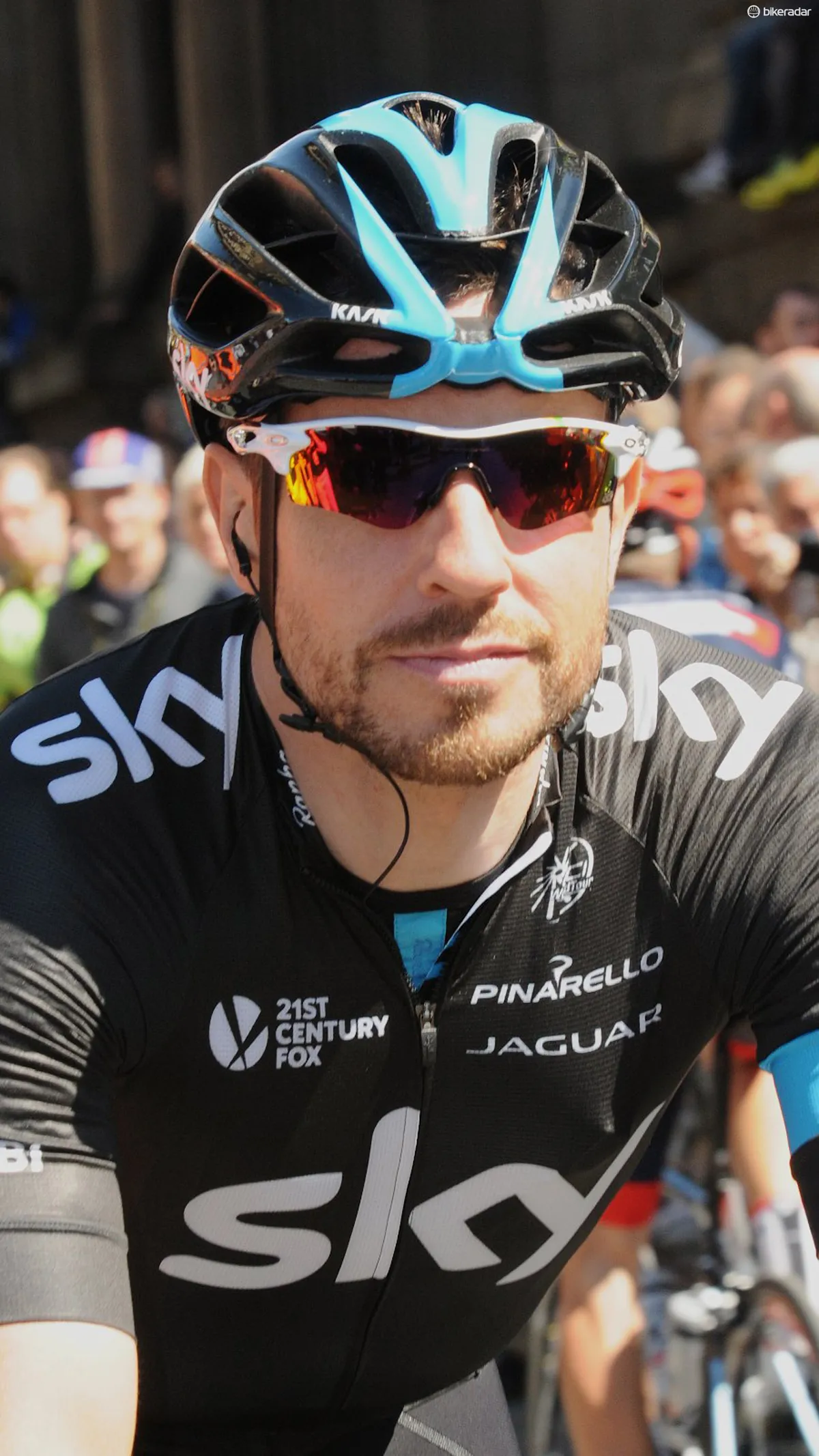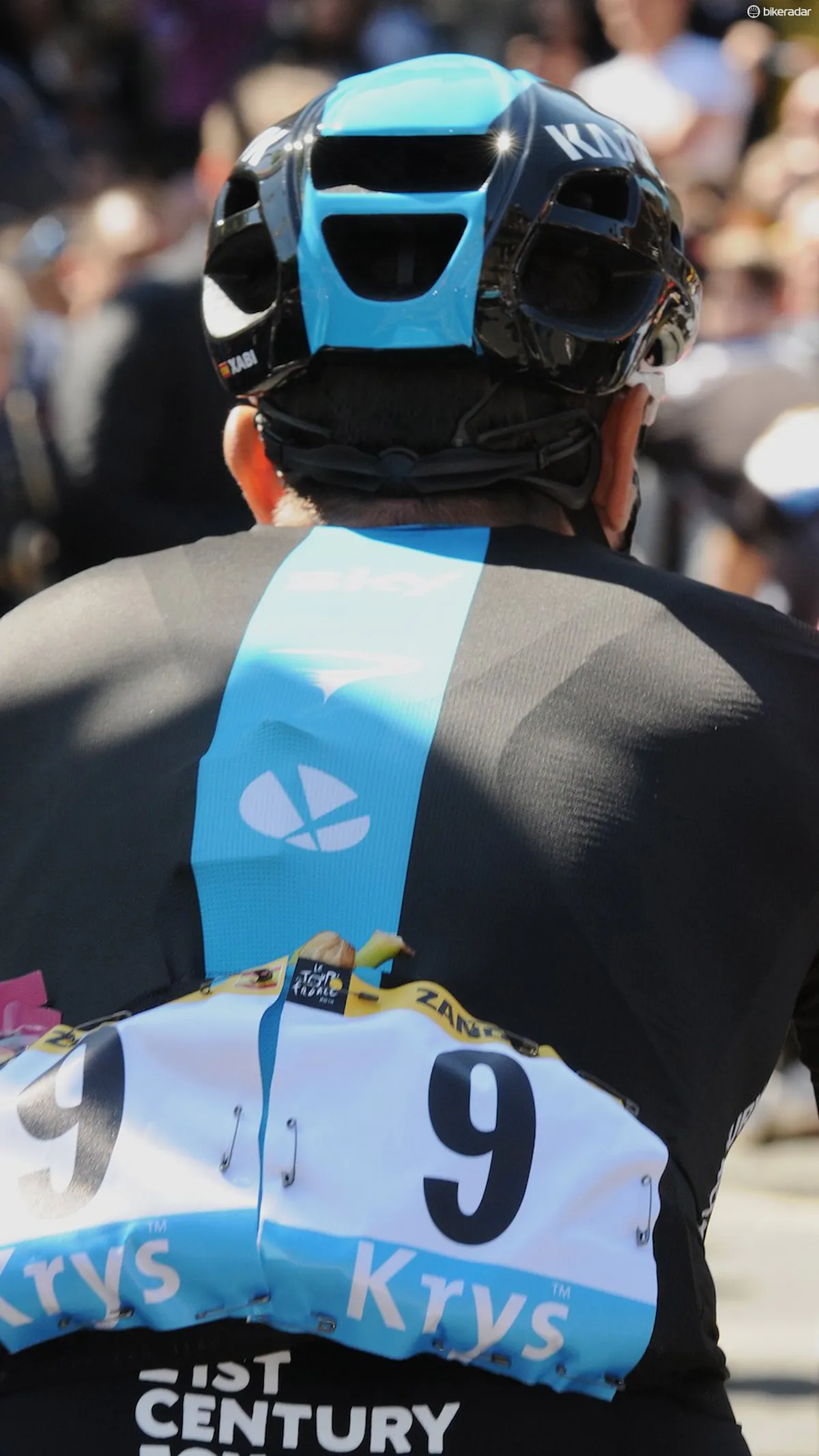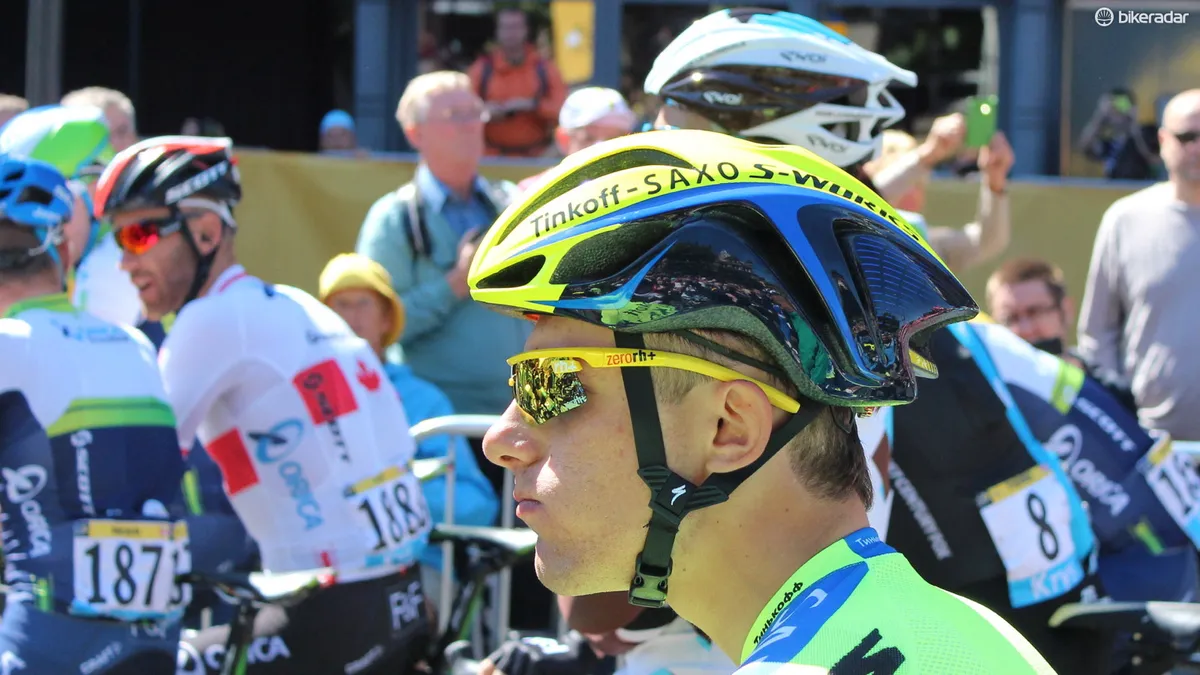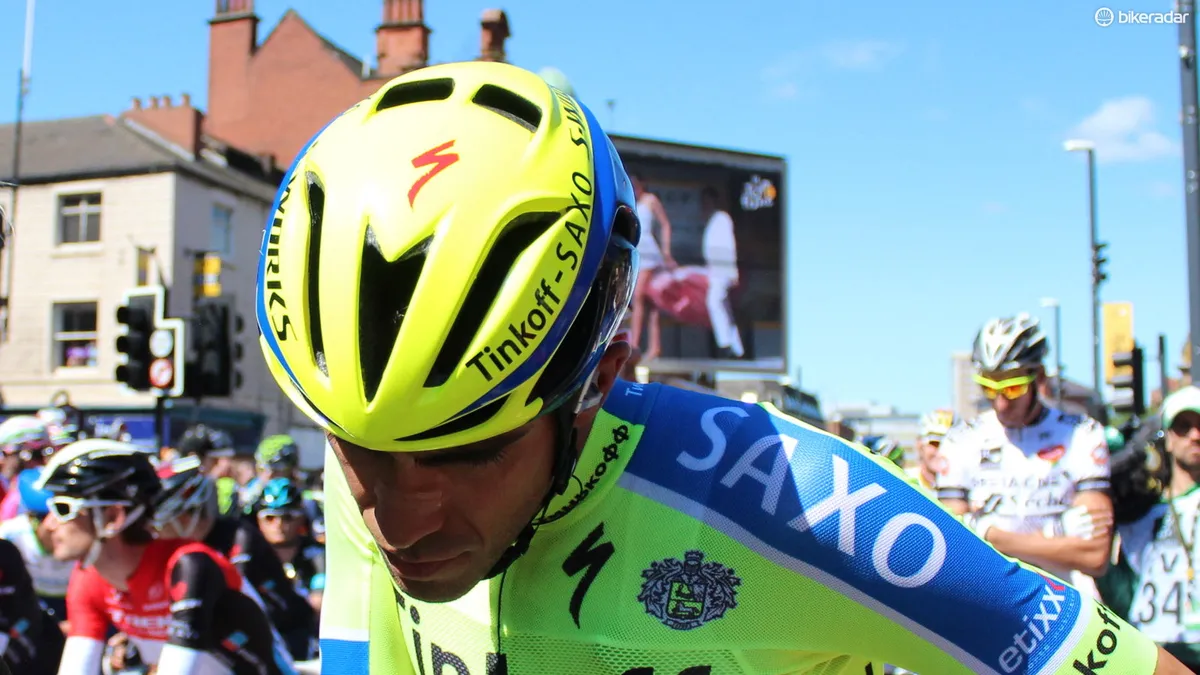Although ubiquitous now, aero road helmets are a relatively new development. Giro made waves when it launched the Air Attack in the summer of 2012; some loved it, many hated it, but all cycling fans certainly noticed the distinct, rounded shape. Now, at the 2014 Tour de France, the vast majority of teams have helmet sponsors with aero options of some sort.
As with road bikes, the cycling industry is rotating through the process of differentiating new categories and then blurring the lines between them. There are a few clear out-and-out aero road helmets at the Tour like the Air Attack, the POC Octal Aero and the Scott Vanish Aero, which have the smooth, rounded shape of a bowling ball. On the opposite end of the spectrum you have traditional helmets created for ventilation, comfort and good looks (plus safety, of course). And now we are seeing aero helmets with ventilation (such as the Specialized Evade), which are not to be confused with ventilated helmets with good aerodynamics, like the new Giro Synthe or new Kask Protone. Confused yet? It is splitting hairs.
We counted 16 of the 22 teams at the Tour de France with aero helmets. [Corrected from earlier 17 of 22. Apologies for the mistake.] For the count, we defined aero helmet as a lid that is either scantily vented or something that may not ‘look aero’ but has wind-tunnel data to back up the shape, such as the Louis Garneau Course, which even Giro acknowledged to be relatively low drag in their tunnel testing.
In the absence of a full-on aero lid in their lineup, some helmet companies have gone the route of just filling in the vents on current models, as good ventilation and good aerodynamics often have an inverse relationship. This is a faster and cheaper way to get an aero helmet than designing a new structure and constructing new molds.
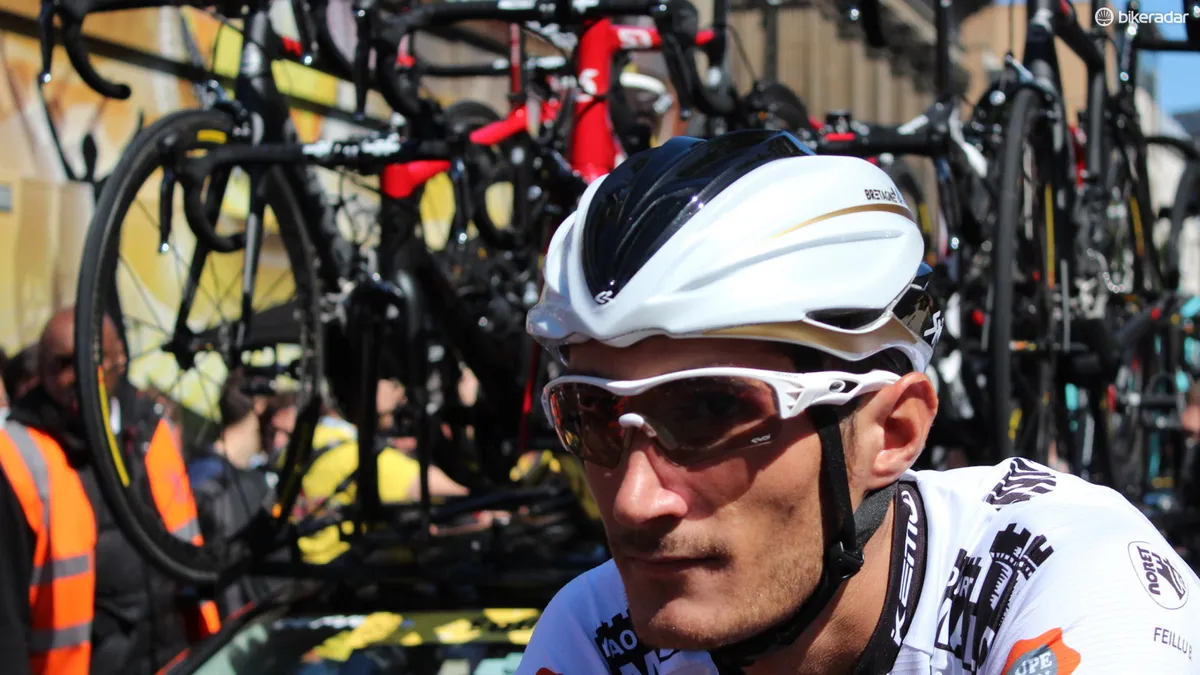
Some companies like Spiuk have a halfway solution for aero road helmets: filled-in vents on current road models
With the new Star Pro that has operable vents that slide open and closed with a single finger switch, Bell designers feel they have a best-of-both-worlds option. And Bell as a company certainly celebrated when Belkin’s Lars Boom rode alone to victory on stage 5, head down into the wind, with a Star Pro on for all fans, television and photographers to see.
For amateur riders, a pop-on aero shell can be a similar two-in-one solution, offering ventilation on some days and perhaps better aerodynamics — or at least rain protection — on other days. But cycling’s governing body, the UCI, still has a rule against non-structural additions in its lengthy and often controversial rulebook, so Tour de France riders can’t use clip-on shells. So, shells are glued on, like the Aeroshell cover on Lazer’s Z1 for Lotto Belisol, or the vent covers on some of AG2R’s Ekoi CXR21 helmets and FDJ.fr’s Uvex Race 5 models.
“For UCI teams we glue the shell on to make it a non-removable cover compliant with UCI regs,” said Lazer spokesman Chris Smith. “The Z1 Aeroshell will be out [for consumer purchase] at the end of August. They are model- and size-specific. Other helmet-model Aeroshells are available now.”
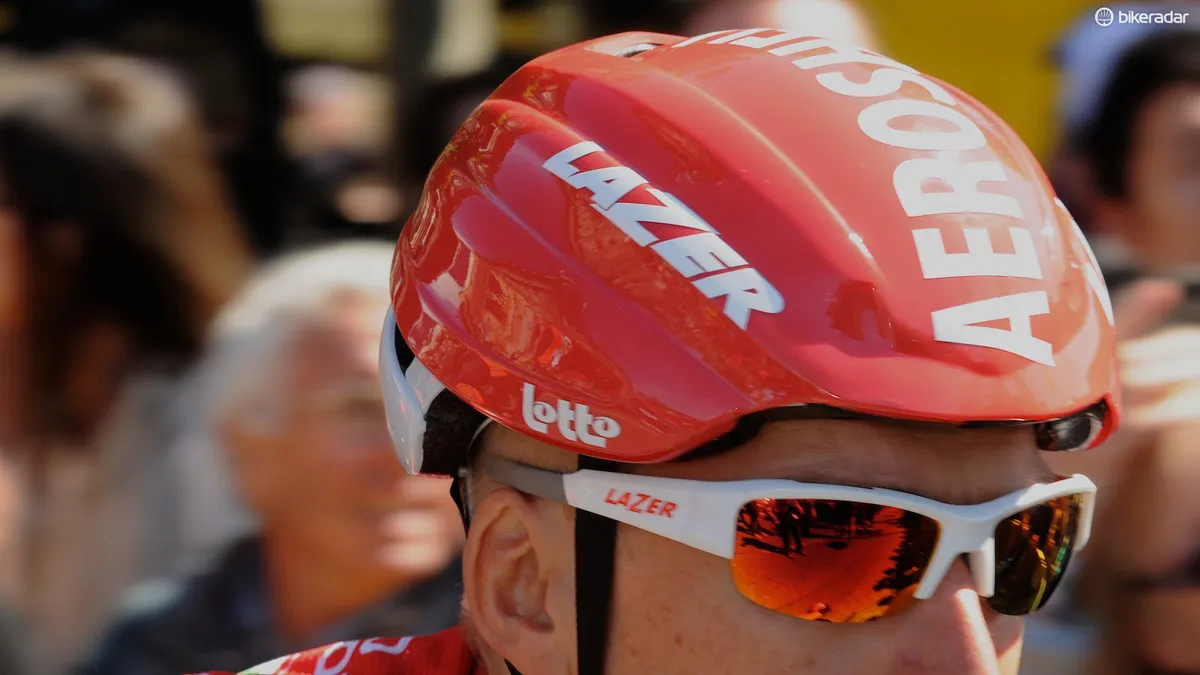
Lazer glues the Aeroshell cover onto the Z1 helmet for Lotto Belisol to meet UCI rules
Helmet companies admit that the energy efficiency savings to be had from aero helmets are small — marginal gains is the term being kicked around a lot these days for single-digit percentage improvements in cycling. But at the sport’s highest level, even a tiny advantage is still an advantage. And as for the looks, well, Boom and his teammates seemed to think he looked just fine coming across the finish line first after a brutally hard stage of the 2014 Tour de France.
Check out the list of aero road helmets by team below, and click through the gallery above for closer looks at many of the models in use at the 2014 Tour de France.
